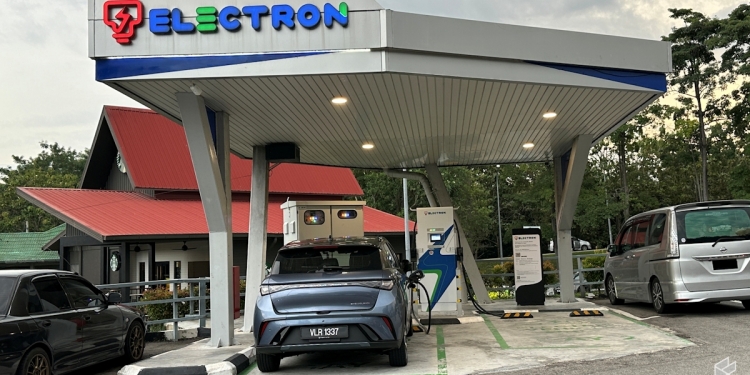Tenaga Nasional Berhad (TNB) is planning to increase its EV charging infrastructure to 200 charging points by the end of 2025. This was revealed through an editorial piece on Bernama.
It was an interesting declaration by TNB which deploys EV chargers under the TNB Electron branding through its subsidiary, TNBX. This is quite an ambitious aim when you consider where TNB Electron is standing at the moment.
There are only a handful of TNB Electron chargers around
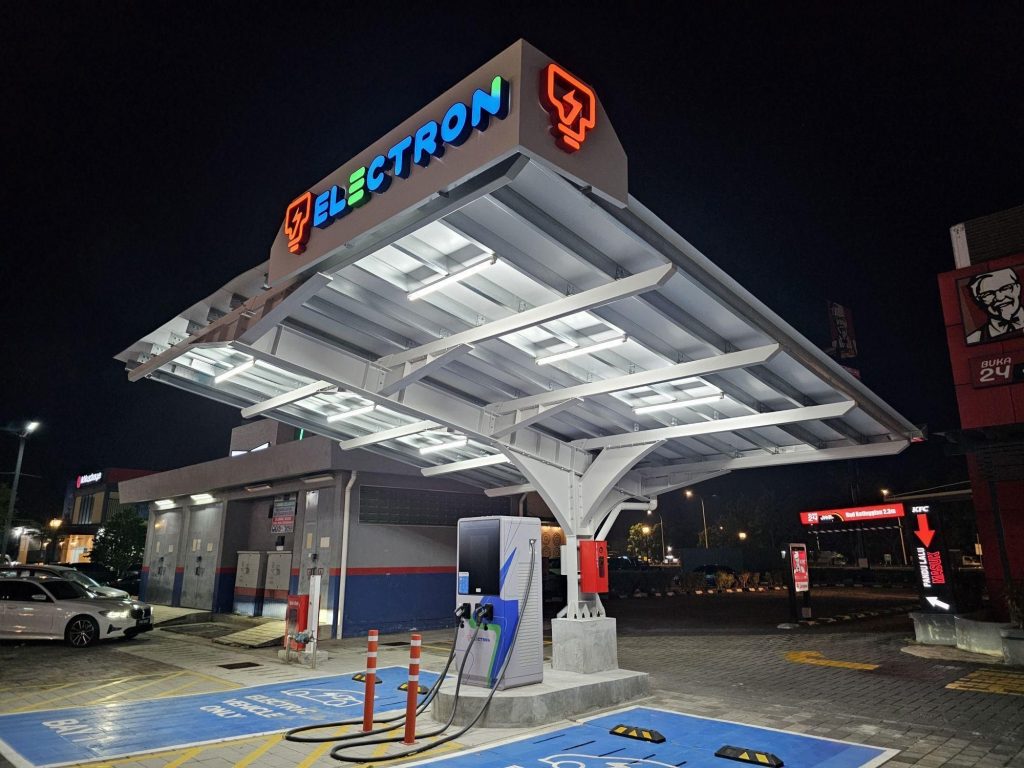
According to TNBX’s website, there are currently 11 TNB Electron public DC charging stations across Peninsular Malaysia. TNBX is also responsible for 18 AC chargers at TNB’s headquarters in Bangsar although they are meant only for internal usages.
Bernama’s editorial piece did not specify whether TNB’s deployment target also includes its premises or just public locations. Let’s assume that the target is only for public charging stations which can benefit the wider masses instead of just TNB fleet vehicles.
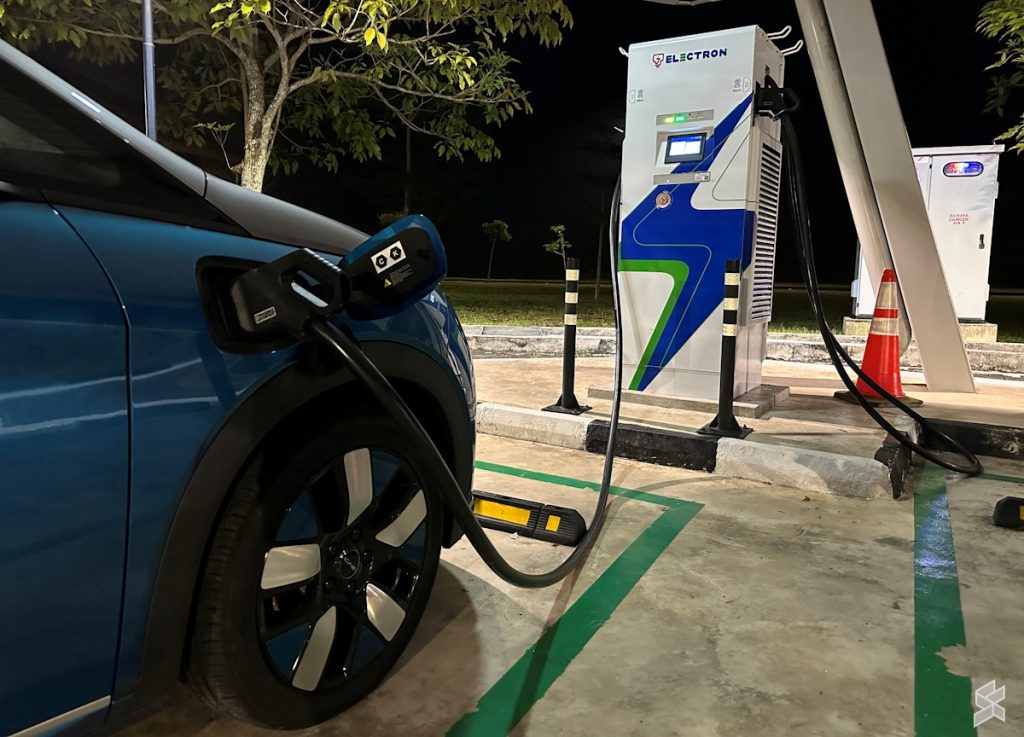
Since each of these 11 existing TNB Electron public charging stations can only support two EVs at once, we are currently looking at a total of 22 charging points. That’s just 4.4% of the total target that TNB has set for 2025.
As for the other 178 EV charging points, the company generally have another 414 days or 59 weeks left between today and 31 December 2025 to meet the target. This means TNB has to activate at least 3 charging points every single week from now until the end of 2025.
TNB Electron deployment is moving at a painfully slow pace
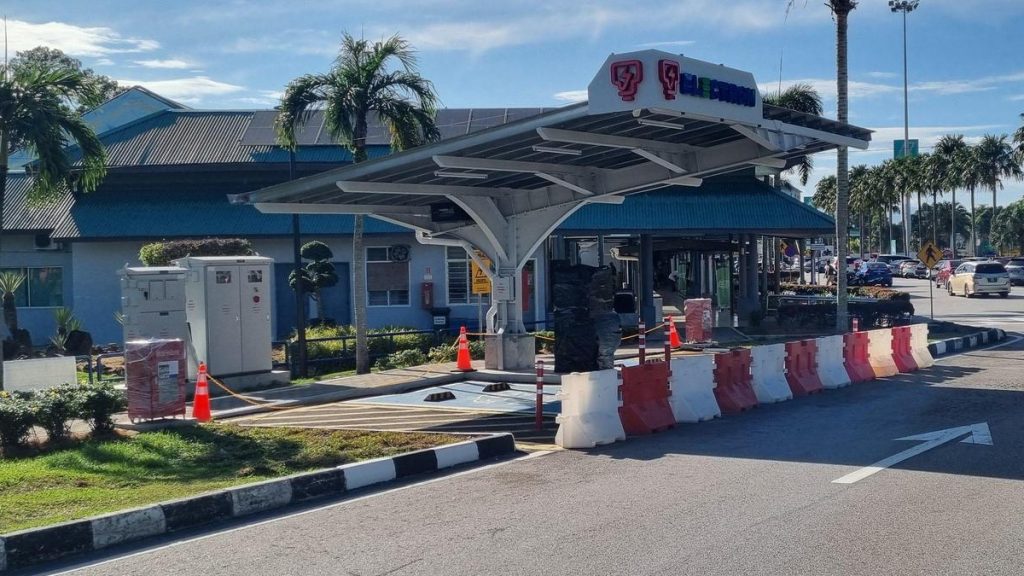
Even though it may seem that the company has been busy deploying EV chargers for the past few months with new chargers at several Aeon Mall locations and Petron stations, TNB’s rate of deployment is very low.
Consider this: as of October 2024, the company has only activated 8 TNB Electron charging stations which are equivalent to just 18 charging points. By average, that’s barely 2 charging points per month and now they need to do 3 per week?
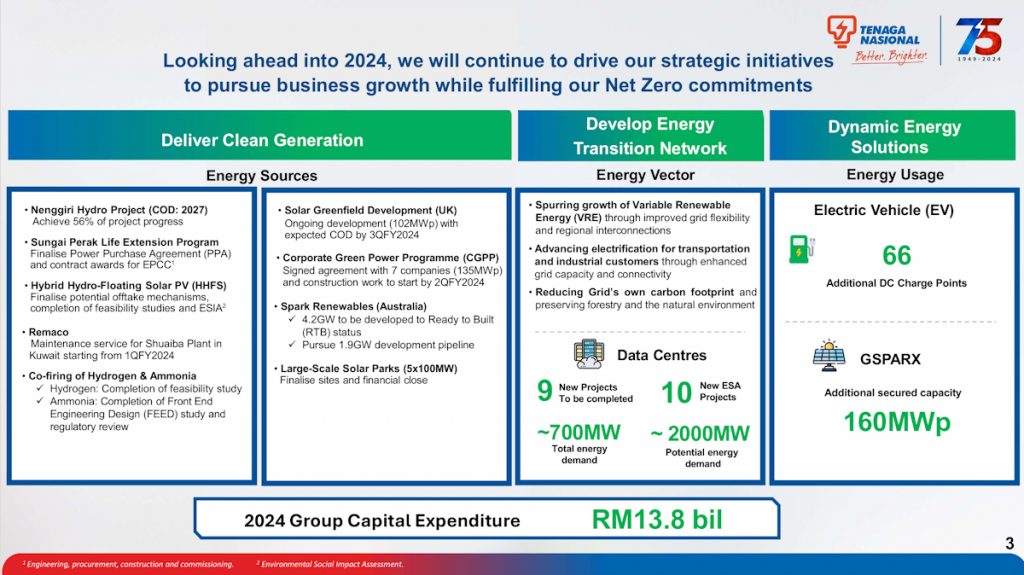
According to one of the presentation slides (shown above) for TNB’s 34th Annual General Meeting (AGM) which was held on 21 May this year, it appears that the company wants to add 66 DC charging points within 2024. Five months later, only 27% of this target was achieved.
Will we finally see the envisioned petrol station-like TNB Electron EV charging hubs?
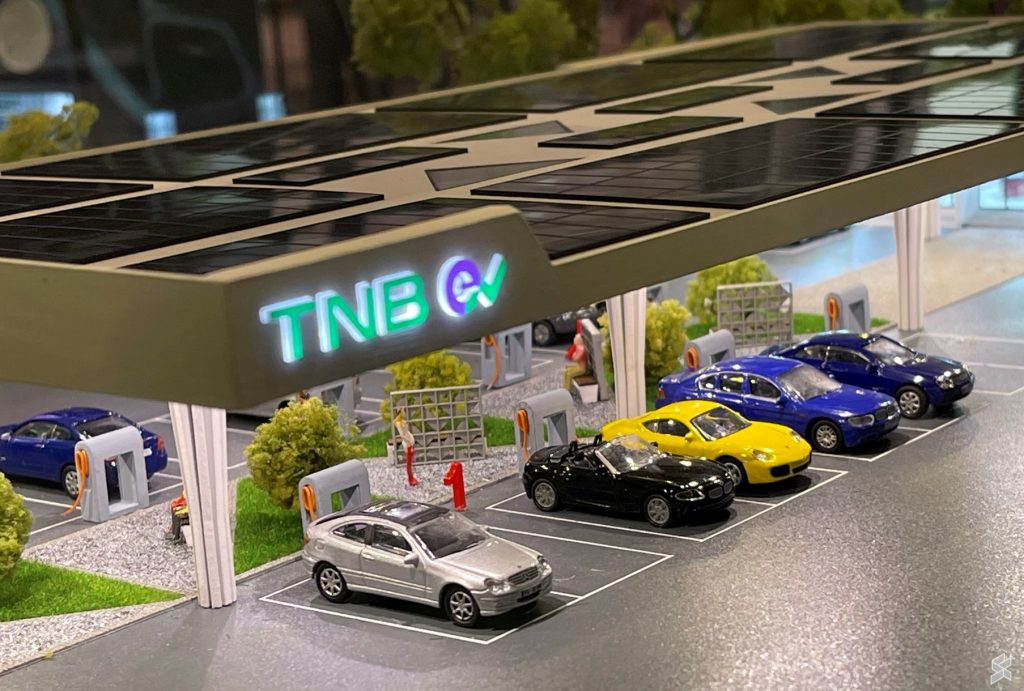
TNB Electron’s deployment pattern so far involved only single dual-nozzle DC chargers per location except for TNB’s own headquarters. This is unlike other Charge Point Operators (CPOs) in Malaysia such as ChargEV, ChargeSini, DC Handal, EVPower, Gentari, Shell Recharge, and Tesla who already established EV charging hubs that feature more than 2 charging points at a single location.
Despite the lack of such an establishment, this does not mean TNB has no intention to build such an EV charging hub. In fact, the company already looking into the idea of having petrol station-style EV charging hubs even before they have finalised the TNB Electron branding that we all know today.
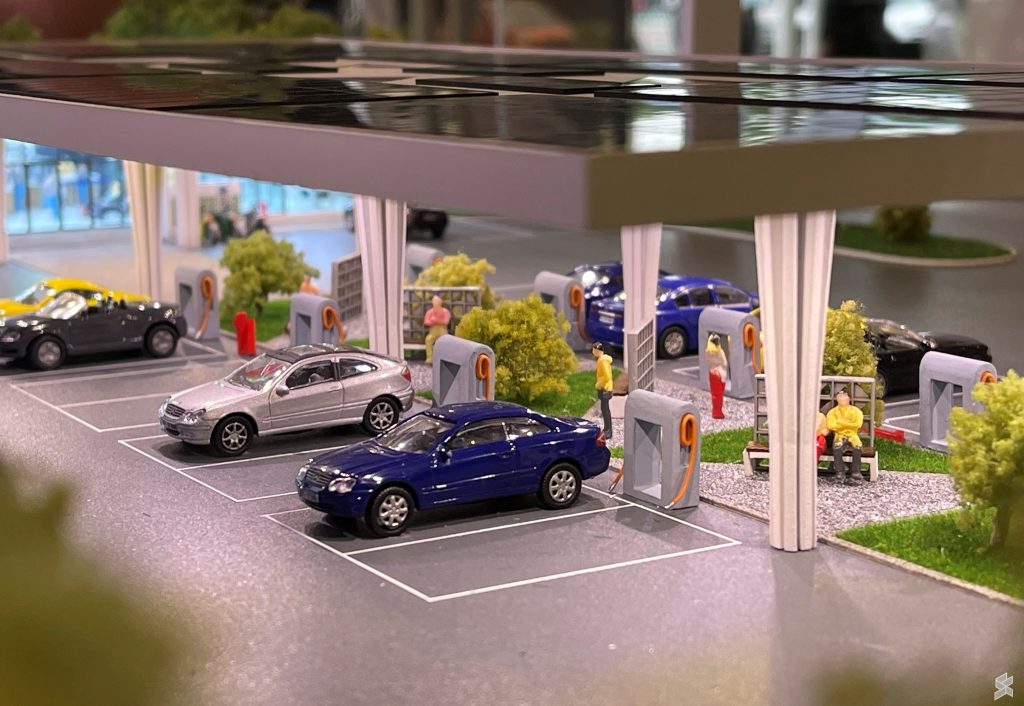
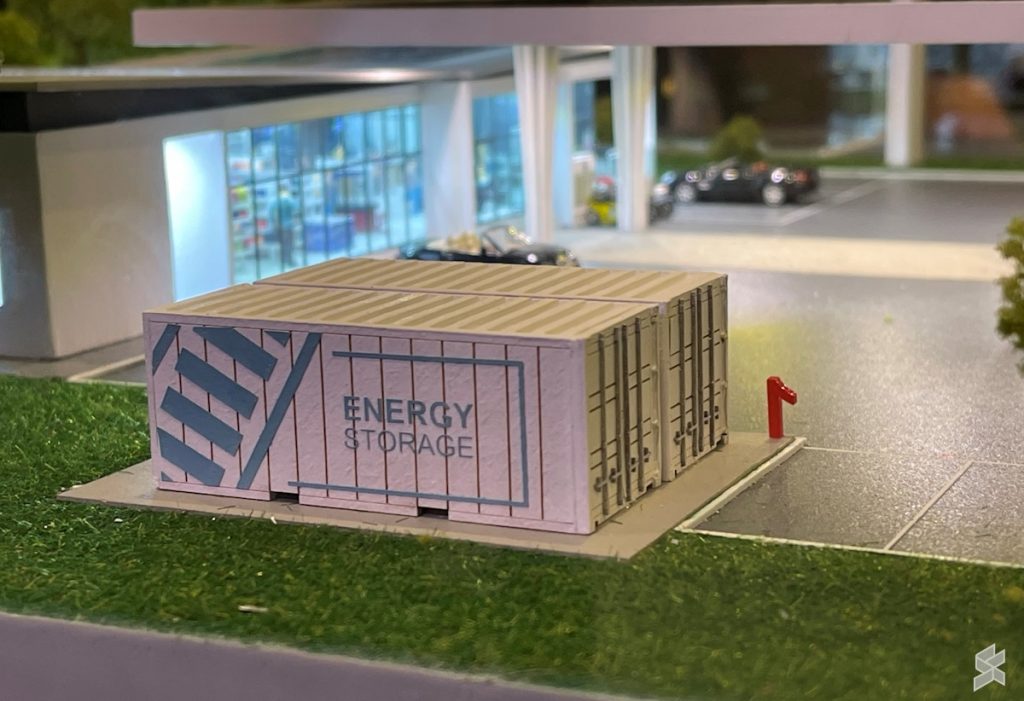
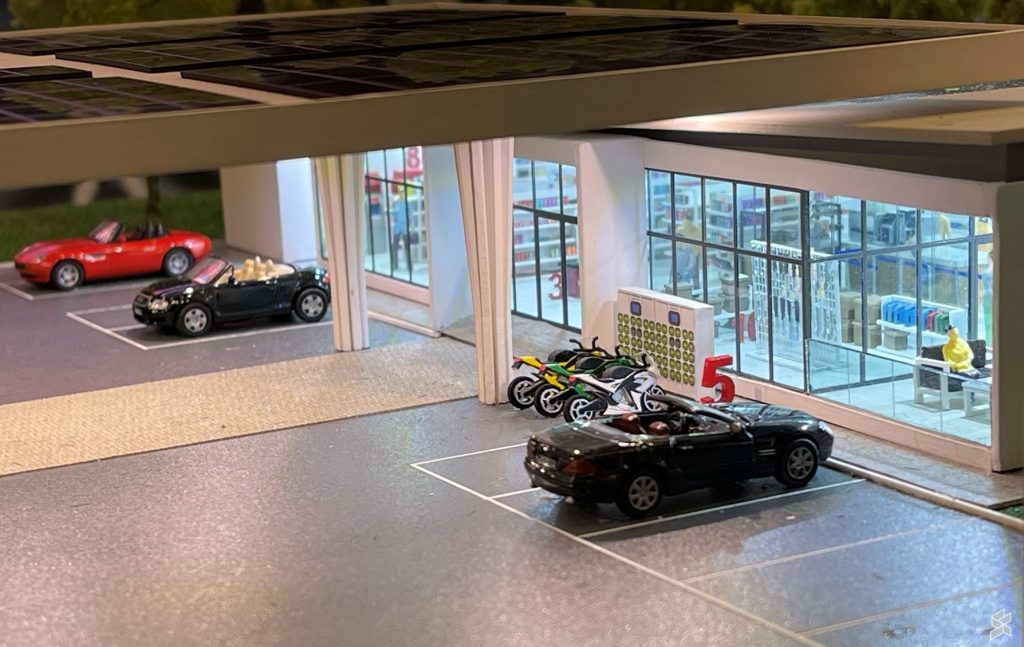
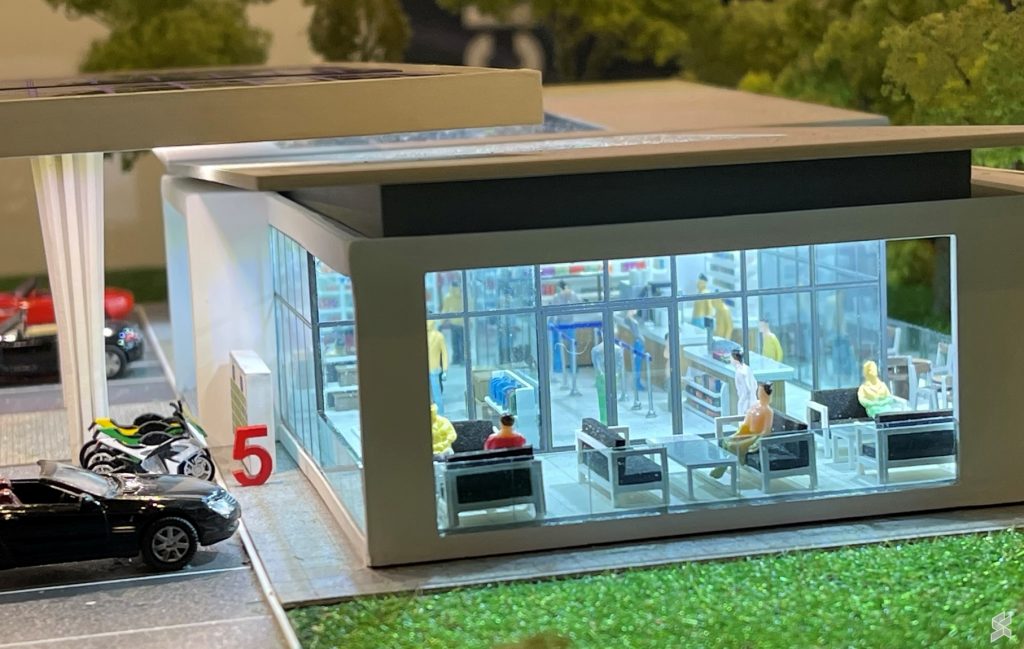
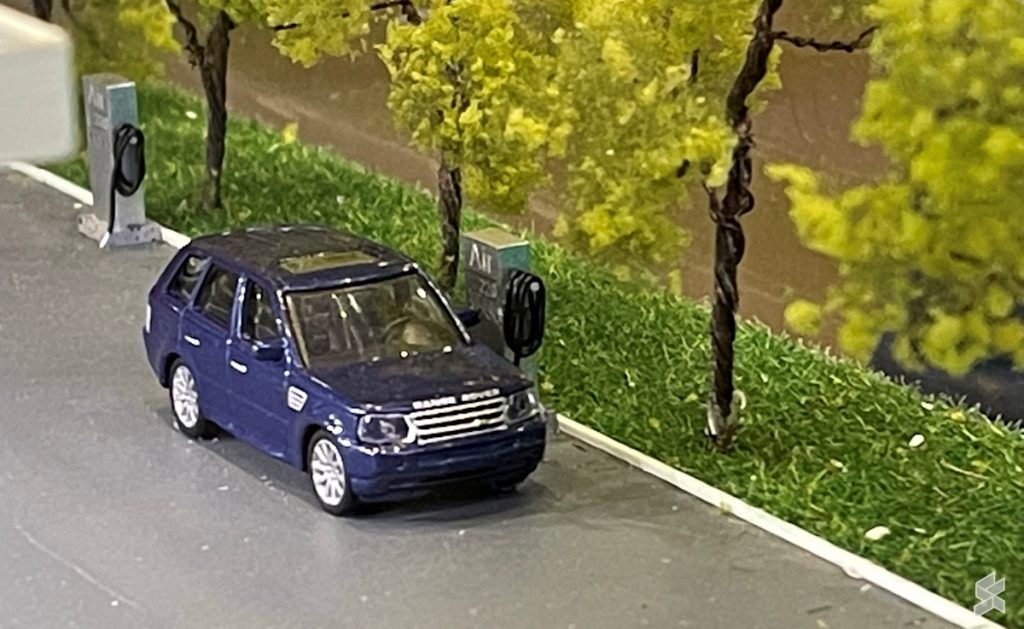
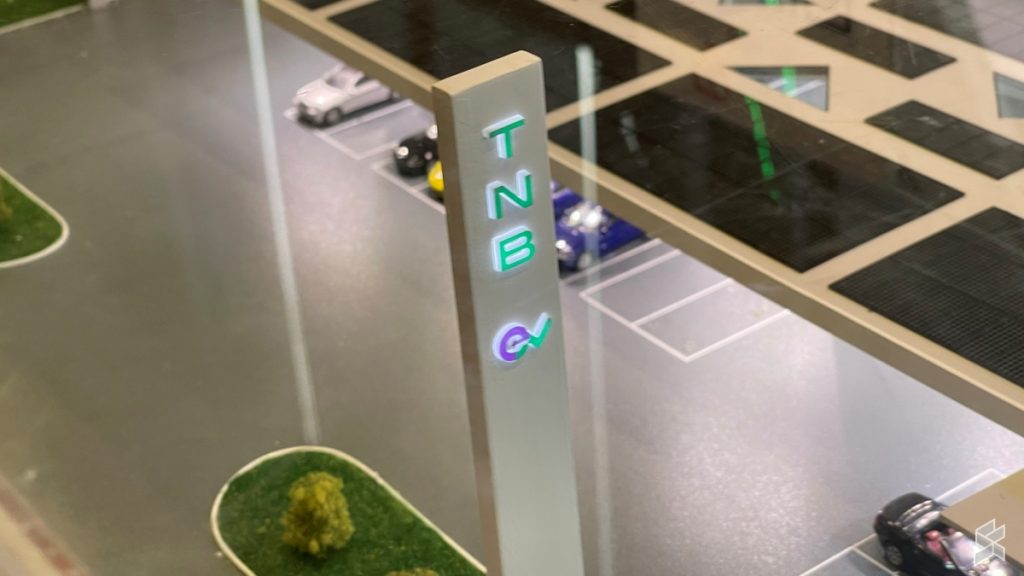
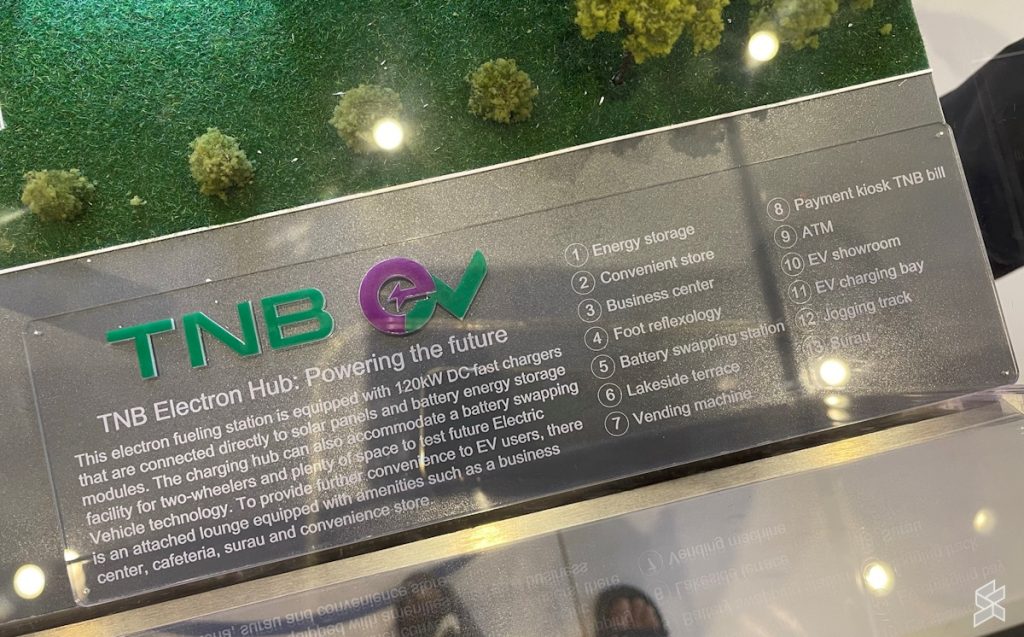
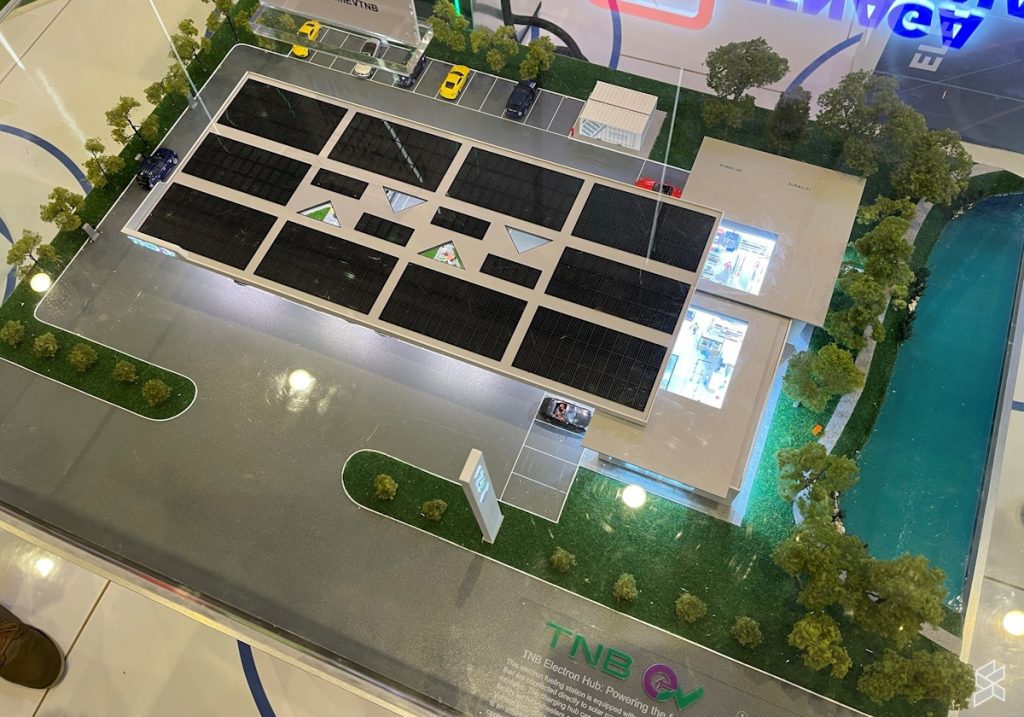
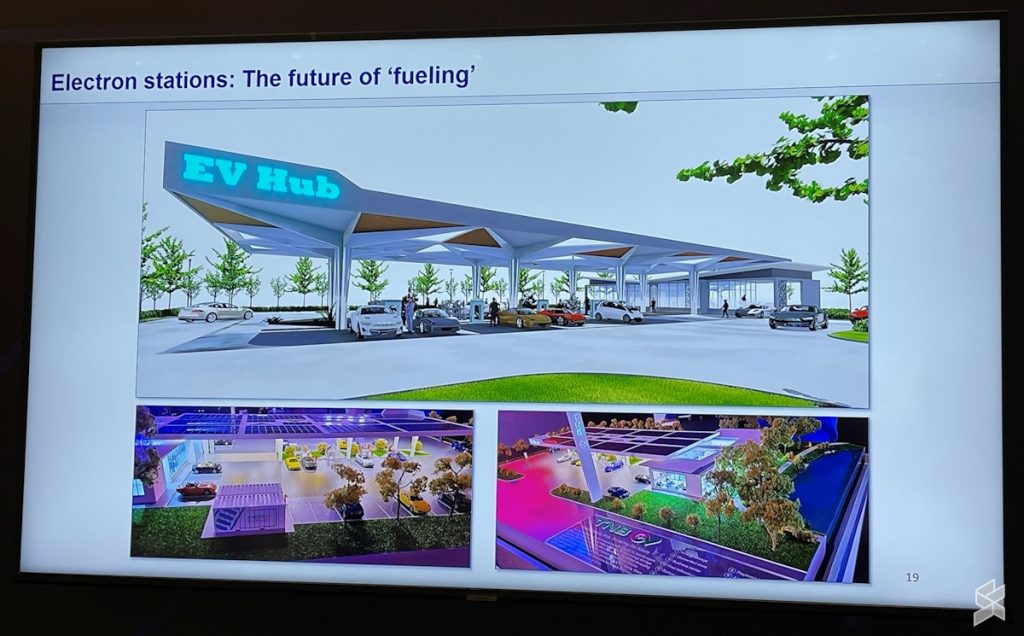
The first TNB Electron Hub was supposed to open in Bangsar by the end of 2023, as noted in the company’s AGM 2022 presentation. However, this plan has apparently fizzled out according to our industry sources although the reasons were not revealed to us.
Meanwhile, TNB has signed a MoU with Gamuda Land to build the TNB Electron Hubs in Gamuda Cove and Gamuda Gardens in October 2022. These hubs are scheduled to be operational in 2025 although we are not sure if this project is still going on as there were no updates from either company even though it have been more than two years have passed since the MoU was signed.
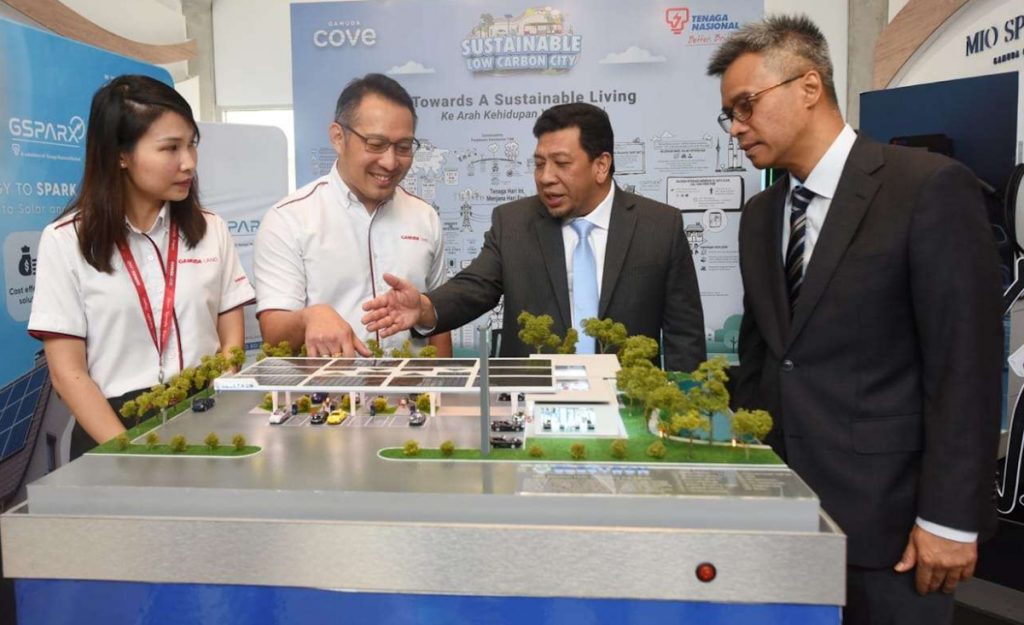
In addition to that, Gamuda Cove is already the home to Southeast Asia’s largest Tesla Charging location while Gentari has also installed a 240kW DC charger with 4 charging nozzles there. The Petronas green energy and mobility subsidiary has also deployed a 200kW DC charger with 4 charging nozzles at Gamuda Gardens that is also solar-assisted.
By building several large-scale EV charging hubs, it may help TNB hit its 2025 charging point target although as you can see, even getting one up is already a challenge for the company. In all honesty, the target to have 200 charging points seems like a pipedream unless TNB can quickly solve whatever the issues that have been dragging their TNB Electron deployment for the past few years.
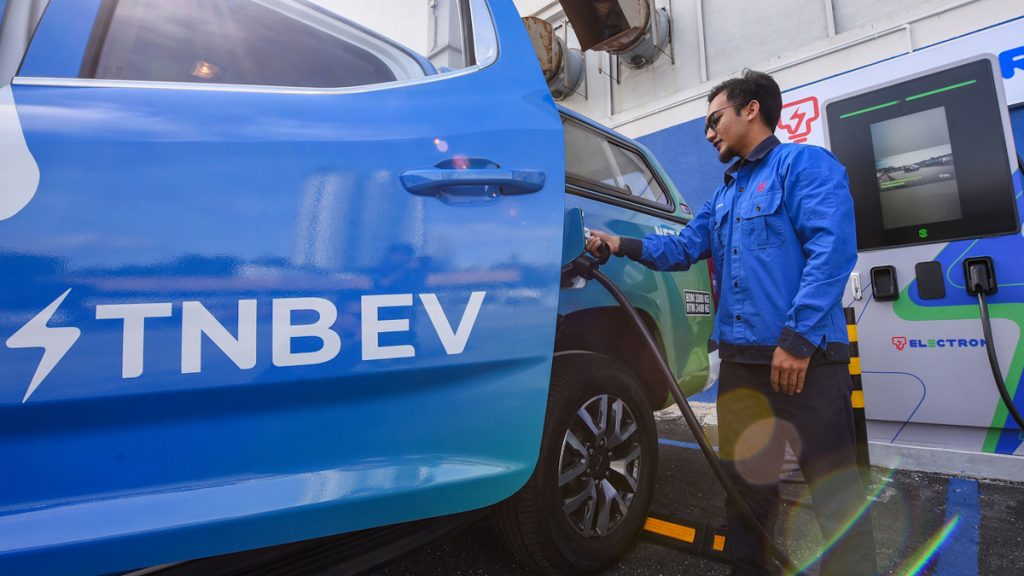
For what it’s worth, 200 charging points are just 2% of the 10,000 charging points that the Malaysian government want to have by the end of 2025. This showed the rollout of EV charging infrastructure is not a walk in the park even for a GLC as big as TNB although it is likely there might be other factors – both internal and external – that are at play here.

